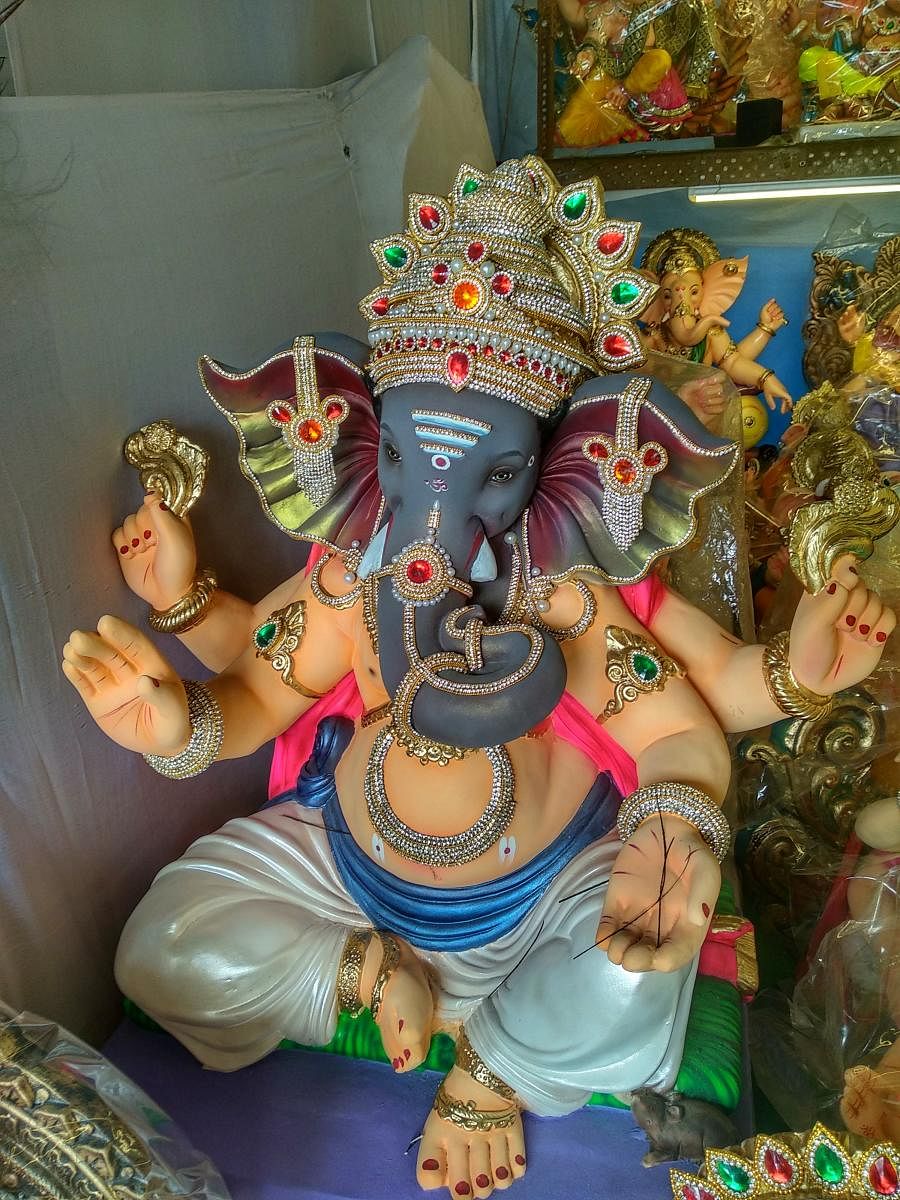
Earlier this month, on a rainy Saturday morning, I found myself, with a broken umbrella, staring at the twisted maze of dusty by-lanes of Lalbaug, home to Mumbai’s iconic ‘Lalbaugcha Raja’ (King of Lalbaug Ganesh). Raindrops trickled down my face as I waited nervously, along with an old couple, for the racing kaali peelis to come to a screeching halt, while the traffic signal turned green and the pedestrians held sway.
On the right, the road opened up to a long-lost and forgotten world of Mumbai, which was once dominated by the now-shut Textile Mills and single-screen cinema halls. Further lay a procession of single-storied buildings with rusted corrugated roofs, lining traditional shops of spices, apparel, musical instruments and floral stalls. On the left was an upgraded and sophisticated avatar of the city, dotted with luxurious apartments and tantalising malls sprawling every corner. Nearby, a radio crooned a Ganesh vandana and a couple of men huddled over clay, carving shapes and sizes, and small tubs of paint in vibrant primary colours.
As the city gears up to mark the arrival of its adored elephant god on Ganesh Chaturthi, I had decided to hop onto a city trail, and now, here I was.
Curated by experiential travel expert Breakaway, led by Ramanand Kowta, I discovered a whole new facet of my own faith.
The science of idol-making
During the visit to an idol-making workshop, I learned about the ‘science of idol making’ or murtividyan. As I walked carefully, so as to not brush against any soft clay or wet paintworks in progress, I learned about the tedious hours and attention to detail required at every stage of the production of the idol.
Artisan Rohit, a 20-something with a wide smile, explained the process that uses materials such as plaster of Paris or clay, fiber glass, jute, kodi matti, bamboo and hay sourced from regional markets. Keen to see the artisans at work, I set my camera to record as the clay turned in Rohit’s hand. Within minutes, he worked up the clay and coconut husk with jaggery water to shape an elephant head with hollow eyes, pointed trunk and long wavy ears. “This is just one part. We create fiber-glass moulds of different shapes and sizes for the face, hands, legs and body. Then, plaster it with hay, coconut husk, plaster of Paris, and leave it to dry for a few hours. Once they are ready, we join them for setting jewel stones and an emulsion coat. The toughest part is crafting the eyes and bringing them to life,” he smiled.
I looked at the umpteen number of idols at various stages of completion. There was a pot-bellied Ganesha sitting on a swan. Next to him was a baby Ganesha sitting clumsily on Lord Hanuman’s lap. There was one sitting on Lord Shiva’s head. Next one had six-pack abs on display. “These days, devotees are quite flexible, welcoming innovative variations. We mould idols on contemporary themes and positive creativity. While this keeps the core imagery intact with the elephant head, artisans can change everything else based on context and imagination. So say, we might explore parent-guardian relationships, music and art,” explains Rohit. My personal delight was a Ganesha as an avid learner, holding an ipad, a clear propagator of digital India.
The artisans
Meandering through the Ganesha shaala, I met with some of the artisans who had been erstwhile mill workers, the Tamasha artistes, belonging to the Bihari and Jewish community engaged in the idol-making business of Mumbai. Anil Kumar had been working at the workshop for over five years now. He added, “This labour-intensive process of handcrafting the lord begins anywhere from three-six months before the festival and requires highest levels of concentration and patience. The artisans learn them on the job. We learn by watching our friends and develop a passion for it. Passion is everything.”
Symbolic or literal?
As the morning paled, we took a break to meet the other travellers. We all looked perplexed and contemplated on faith and idol-worship. Ramanand Kowta, our guide, was a man of diverse interests in subjects like philosophy, spirituality and religion. He said, “ Hinduism is a religion of dvaita andadvaita, the form and the formless. Every ritual and action finds its basis in scientific thinking. The most popular hand greeting, namaste, recognises the individual in front of us as divine and therefore communicates that we are all one and that we salute the god in others.
Every ritual and action finds its basis in scientific thinking.
Likewise, if you look at this festival, we realise that the celebration over 10 days is nothing more than an act of making clay images and ceremoniously immersing them in the ocean. It signifies the raising of consciousness from material (clay image) to cosmic level (the ocean), thus urging the believers to scan the rituals and scriptures for metaphors rather than literal considerations.”
It was time to return to the hustle and bustle of routine life, but not before we had explored the surrounding, the popular Masala Galli, to catch some red fire in taste. The gallis were buzzing with life to prepare fiery-red masalas, the diverse delicacies, and mouth-watering sweets. We began with spice-spotting — from Guntur to Kashmiri to Bedki and Reshampatti. The girls with me busied themselves letting their noses guide them to the local spices and the aromas of star anise. I got myself a paper roll of mirchi bhajjiyas and a cutting chai. With the chants of 'Ganpati bappa morya' in the backdrop, we had perfectly paced ourselves to bring our dear god home.